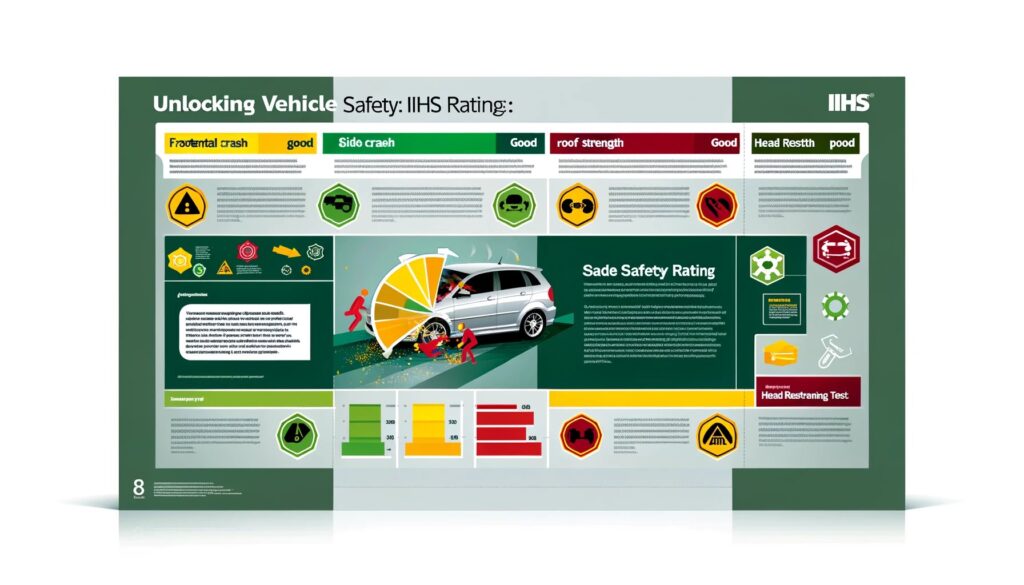In this comprehensive guide, we delve deep into the intricacies of vehicle safety evaluation, focusing particularly on the rigorous standards set by the Insurance Institute for Highway Safety (IIHS). Understanding these evaluations is paramount for consumers looking to make informed decisions regarding their vehicle purchases.
Introduction
Vehicle safety is a paramount concern for drivers and passengers alike. With the advancements in automotive technology, understanding the nuances of safety ratings becomes essential. The IIHS stands as a beacon of reliability in this regard, providing comprehensive assessments that aid consumers in choosing the safest vehicles on the market.
Understanding IIHS Testing
The IIHS conducts thorough evaluations encompassing both crashworthiness and crash prevention capabilities. These evaluations are designed to simulate real-world scenarios, providing a holistic view of a vehicle’s safety performance.
Frontal Crash Tests
Frontal crash tests conducted by the IIHS assess a vehicle’s ability to withstand impact from the front. Rigorous procedures are followed to simulate various collision scenarios, with ratings assigned based on the vehicle’s structural integrity and occupant protection measures.
Side Crash Tests
Side crash tests are instrumental in evaluating a vehicle’s protection levels in side-impact collisions. The IIHS employs sophisticated methodologies to replicate these scenarios accurately, considering factors such as intrusion into the passenger compartment and injury likelihood.
Rollover Resistance Tests
Rollover resistance tests gauge a vehicle’s stability and likelihood of rolling over in the event of a collision. Through meticulous testing procedures, the IIHS provides invaluable insights into a vehicle’s rollover propensity, contributing to overall safety assessments.
Criteria for Top Safety Pick Designation
Vehicles earning the Top Safety Pick designation must meet stringent criteria set by the IIHS. These criteria encompass various safety aspects, including crash test performance, advanced safety features, and crash avoidance technologies.
Criteria for Top Safety Pick+ Designation
The Top Safety Pick+ designation represents the pinnacle of safety accolades bestowed by the IIHS. To qualify for this prestigious recognition, vehicles must not only meet the criteria for the Top Safety Pick but also demonstrate enhanced safety capabilities, particularly in terms of crash prevention systems.
Impact of IIHS Ratings on Consumer Choices
IIHS ratings wield significant influence over consumer purchasing decisions. Studies have shown that vehicles with higher safety ratings are preferred by consumers, underscoring the importance of these evaluations in the automotive industry.
Impact of IIHS Ratings on Manufacturers
Manufacturers are keenly attuned to IIHS ratings, as they directly impact consumer perception and market competitiveness. Positive ratings incentivize manufacturers to invest in safety technologies, driving continuous improvements in vehicle safety standards.
Notable Advancements in Vehicle Safety Inspired by IIHS
The IIHS has played a pivotal role in catalyzing advancements in vehicle safety technology. From reinforced vehicle structures to innovative safety features such as automatic emergency braking, the influence of IIHS evaluations permeates throughout the automotive industry.
Common Misconceptions About IIHS Ratings
Misconceptions surrounding IIHS ratings abound, necessitating clarification. Contrary to popular belief, IIHS ratings complement government crash test ratings and offer a more nuanced perspective on vehicle safety performance.
Future Trends in Vehicle Safety Evaluation
As technology continues to evolve, so too will the methodologies employed in vehicle safety evaluation. Emerging trends such as artificial intelligence and advanced sensor technologies hold the promise of further enhancing the accuracy and reliability of safety assessments.
Frequently Asked Questions (FAQs)
- What is IIHS and what is its role in vehicle safety? The IIHS is a nonprofit organization dedicated to reducing deaths, injuries, and property damage caused by motor vehicle crashes. Its role involves conducting research and evaluations to promote safer vehicles and roadways.
- How does IIHS conduct crash tests? IIHS conducts crash tests using specialized equipment and procedures designed to replicate real-world collision scenarios. These tests assess a vehicle’s crashworthiness and crash prevention capabilities.
- What are the criteria for earning the Top Safety Pick designation? Vehicles must meet specific criteria for crash test performance, advanced safety features, and crash avoidance technologies to earn the Top Safety Pick designation.
- How do IIHS ratings differ from government crash test ratings? While government crash test ratings focus primarily on regulatory standards, IIHS ratings encompass a broader range of criteria, including crash avoidance technologies and real-world crash scenarios.
- Are IIHS ratings updated annually? Yes, IIHS continuously evaluates new vehicle models and updates its ratings accordingly to reflect the latest safety advancements.
- Can a vehicle lose its IIHS safety designation over time? Yes, if a vehicle’s safety performance deteriorates or fails to meet updated criteria, it may lose its IIHS safety designation.
- How can consumers access IIHS safety ratings? IIHS safety ratings are readily accessible on their official website, providing consumers with valuable information to make informed purchasing decisions.
- Do IIHS ratings consider advanced driver-assistance systems (ADAS)? Yes, IIHS ratings take into account the presence and effectiveness of advanced driver-assistance systems, recognizing their role in enhancing vehicle safety.
- Are IIHS ratings applicable to all types of vehicles, including electric and hybrid cars? Yes, IIHS ratings are applicable to all types of vehicles, ensuring comprehensive safety evaluations across diverse automotive segments.
- How do IIHS ratings impact car insurance rates? Vehicles with higher IIHS ratings may qualify for lower insurance premiums, as they are perceived as less risky to insure.
Conclusion
In conclusion, the IIHS serves as a beacon of excellence in vehicle safety evaluation, providing consumers with invaluable insights into the safest vehicles on the market. By understanding IIHS ratings and their implications, consumers can prioritize safety when making vehicle purchasing decisions, ultimately contributing to safer roadways for all.









